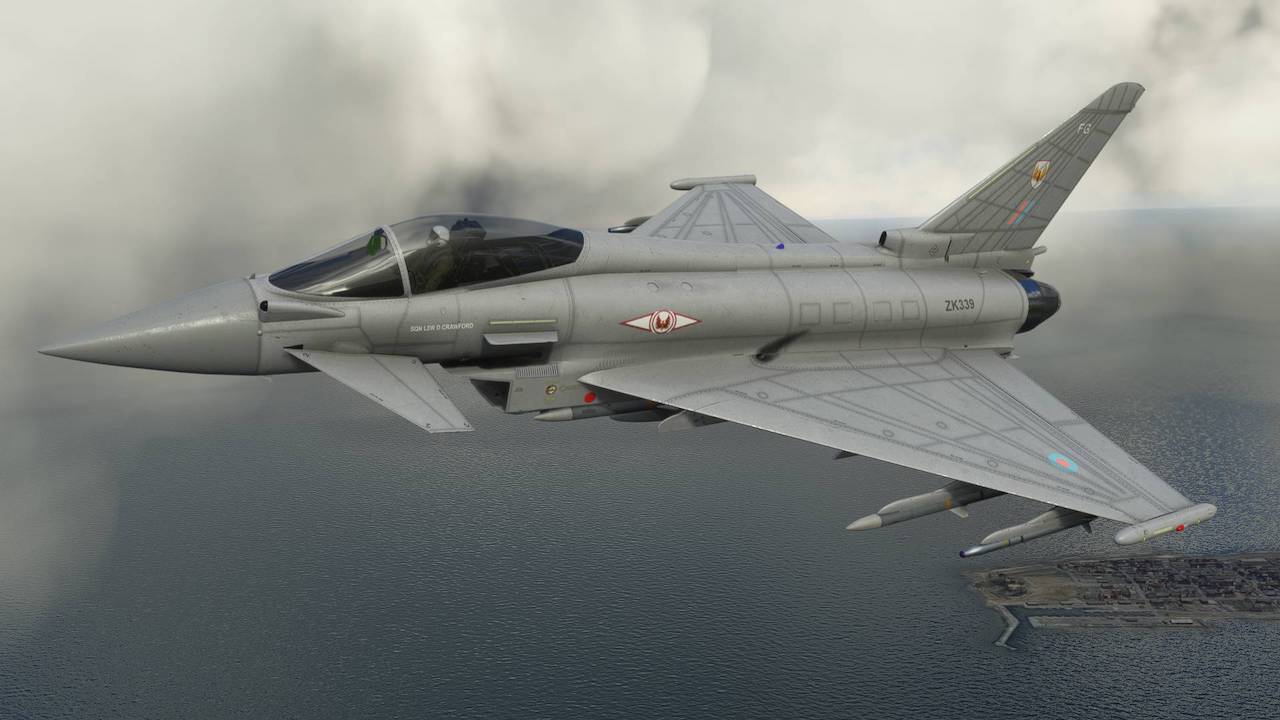– Visual Improvements:
– Complete redesign of cockpit geometry based on publicly available reference photos
– Full overhaul of cockpit textures
– Reworked buttons and LED-style typography conversion
– Replacement and reconfiguration of switches with functionalities aligned to real-world manuals
– Addition of the reversionary gauges panel
– Remodel of the rear canopy section
– Implementation and integration of the attention getters system with the DWP
– Various animation fixes and synchronization adjustments
– Functional Improvements:
– Startup system redesign: Now incorporates GBOX buttons, the AIRDRIVE switch (EMGY, AUTO, OFF), and LCOCK switches
– Removal of non-authentic LENG FUEL and RENG FUEL switches, with logic now handled through LCOCK
– Cold & Dark checklist fully updated to match new system
– Lighting System Overhaul:
– Fully functional reversionary lighting
– NIGHT, DAY, and A FLASH brightness modes implemented
– Dedicated dimming knobs for consoles, glareshield, screens, and independent instruments
– Fixes to ambient (flood) lighting logic
– Exterior lighting system reviewed
– MDE (Multi Display Environment):
– VAL INCR and VAL DCRS now support hold-to-repeat input
– Fixed bug where event listeners were stacking when switching between pages
– Applies primarily to AP, autothrottle, and GPWS controls (note: not bindable as these are internal logics, not sim events)
– MHDD:
– The Stores page now supports touch input, allowing users to select payloads directly (external tanks and weapon loads included)
– Flight Model:
– Softer control sensitivity near center to reduce twitchiness and allow finer control
– Smoother autopilot behavior and FBW stability without compromising manual handling
– Parasitic and induced drag revised: previous versions retained too much speed at idle
– Drag from control surfaces rebalanced for more realistic response
– External Model:
– Nose gear suspension corrected: now properly animated and damped
– Minor geometry fixes and general mesh smoothing
Fully native MSFS aircraft
The Typhoon has been coded with Microsoft Flight Simulator native ‘Model Behaviors’ animations and built to MSFS operational specifications to minimise issues with future simulator upgrades.
The CJ Simulations Typhoon is fully compliant with MSFS native materials and makes use of the new simulator’s features such as rain effects and sounds, fully reflective glass, native aerodynamic sound structures, the new ‘Modern’ aerodynamics system and customised visibility controls for wheel chocks and covers.
Other features include authentic night lighting which includes user-operated ‘slime lights’ for combat operations and custom-coded animations for flaperons and slats based on aircraft airspeed and angle of attack.
Numerous external animations include canopy, crew ladder, tail hook and all control surfaces, along with a customised delta and canard flight model based on real-world data for the Typhoon.
The Typhoon is also fully compliant with Virtual Reality headsets.
Cockpit:
• Truly 3D virtual cockpit featuring accurately modelled ejection seat, controls and detailed texturing
• Instruments constructed in 3D with smooth animations
• Custom-coded MFD screens and Head-Up Display to match the real Typhoon’s displays
• ‘Scratched canopy’ glass effects and reflective glass
• Crew figure in the virtual cockpit is coded to disappear when you occupy their seat

